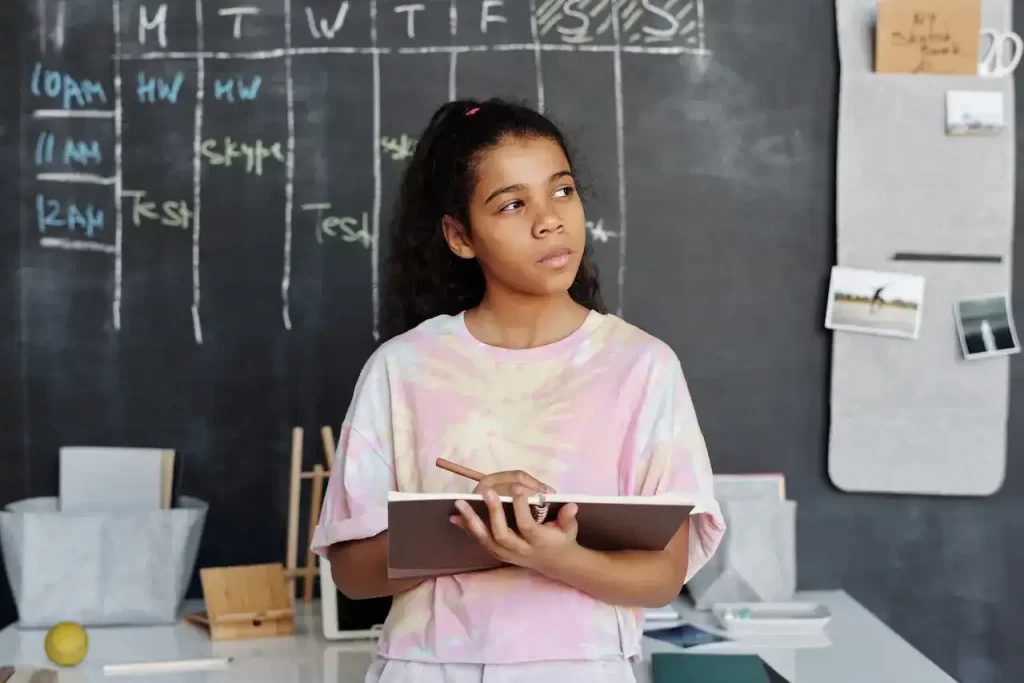Reading is one of the most powerful ways to transform your life. Books give us insights into the minds of the smartest people in the world, and you are just one week away from having the minds of Steve Jobs, Elon Musk, Albert Einstein, or whoever you need to learn from. But the only thing that separates you from where you are today and where you want to be in life is a gap of skillset. The faster you learn the skills you need, the quicker you will be moving towards your goals.
However, reading can be a daunting task, especially if you have the reading skills of an eight-year-old. It might take up more time than you have and could be detrimental to your success. Time is our most valuable asset, and once we’ve spent it, we can never get it back. Therefore, it’s crucial to learn efficient reading skills to save time and learn faster.
In this article, I will share with you three quick and easy techniques to improve your reading speed. These techniques will help you read faster without sacrificing comprehension, enabling you to get through more books and acquire knowledge at a faster rate.
Reading is foundational to all learning, and learning is essential to acquire the skills you need to reach your wildest dreams. I want the best for you, and I want you to reach your goals, so let’s dive into these techniques and start improving your reading skills.
Use A Visual Tracker
Have you ever wondered how some people can read a book in one sitting while you struggle to get through a few pages? It’s not because they have superhuman abilities, but rather because they have efficient reading skills. Reading is fundamental to learning, and the faster you can read, the more information you can absorb in less time. That’s where technique number one comes in: using a visual tracker.
Our eyes are wired to focus on moving objects, rather than stationary ones. Think about it, when you’re scrolling through your social media feed, your eyes automatically gravitate towards the videos and gifs, right? It’s the same concept with reading. By using a visual tracker, you’re creating movement for your eyes to follow, which helps you read faster.
So, how do you use a visual tracker? It’s simple, just take a pencil or use your finger to guide your eyes along the sentences. You don’t need to touch the book or mark it in any way, just let your eyes follow the movement. You’ll be amazed at how quickly you’ll be able to read, and you might even find it easier to concentrate as well.
Using a visual tracker is a great way to train your eyes to move faster, and it’s especially helpful if you find yourself getting distracted while reading. Plus, it’s a technique that you can apply to any type of reading material, whether it’s a book, an article, or even an email. So, give it a try and see how much faster you can read.
Use Your Peripheral Vision
When we read, we tend to focus on the words directly in front of us, which can slow down our reading speed and decrease comprehension. However, using our peripheral vision can help us read faster and more efficiently.
Peripheral vision is the ability to see objects and movements outside of our direct line of sight. By using our peripheral vision while reading, we can see multiple words at once, increasing our reading speed.
To utilize this technique, it’s important to maintain a relaxed focus while reading. Instead of staring intently at each word, try to relax your eyes and take in as much information as possible. You may need to adjust the lighting and font size to make this easier.
Combining this technique with the visual tracker can help maximize its benefits. Use your finger or a pencil to guide your eyes along the lines of text, while also trying to take in as much information as possible with your peripheral vision. This may take some practice, but over time you’ll be able to read faster and more efficiently than before.
It’s worth noting that while using your peripheral vision can increase your reading speed, it may not be as effective for comprehension as reading each word individually. It’s important to find a balance between speed and understanding to ensure you’re getting the most out of your reading.
Get Rid Of Sub Vocalization
Do you ever catch yourself mouthing the words as you read? This is called sub-vocalization, and it’s actually slowing down your reading speed. When we read, our brains have the ability to comprehend words and sentences without having to sound them out in our heads. However, many of us have developed the habit of silently pronouncing each word as we read, which can significantly decrease our reading speed.
The good news is that you can train yourself to get rid of sub-vocalization. One technique is to count out loud while you read. This may seem counterintuitive, but it can help you break the habit of silently sounding out words. Start by counting out loud as you read each sentence, gradually increasing your speed as you become more comfortable with the process. Eventually, you can work up to reading without counting out loud and still comprehending the text.
It may take some time to train yourself to eliminate sub-vocalization, but it’s worth it. By breaking this habit, you can increase your reading speed and comprehension. Plus, you’ll be able to read without moving your lips or mouthing the words, which can be a big help when you’re reading in public or in a quiet space.
If you’re combining this technique with the visual tracker and utilizing your peripheral vision, you’ll be able to read faster than ever before. With practice, these techniques can become second nature and help you become a more efficient reader.
Additional Reading Tips
Great job on learning about those reading techniques! But we’re not done yet. Here are some additional tips that can help you become an efficient reader and make reading a habit.
First, consider practicing reading like exercise. Just like working out, you need to continuously challenge yourself to improve. Push yourself to read a little bit faster each time, and over time, you’ll notice a significant increase in your reading speed.
Another tip is to hold the book upright, rather than laying it flat on a surface. When you hold it upright, your eyes are forced to move in a straight line, which helps you recognize words faster.
Don’t forget to take breaks! After reading for about 20-25 minutes, take a short break to rest your eyes and avoid eye strain. This will also help you absorb the information better when you return to reading.
Finally, make reading a habit. Consistency is key when it comes to improving any skill. Try to set aside a certain amount of time each day or week for reading. You could even make a reading list of books or articles that interest you to help keep you motivated.
Remember, reading is not just about consuming information, it’s about personal growth and success. So, don’t be afraid to challenge yourself and try out these tips to become an efficient reader. Happy reading!
Conclusion
Reading is not only a great source of entertainment but also an important tool for personal growth and success. In today’s fast-paced world, it is more important than ever to be able to read efficiently, saving time and learning faster.
Using a visual tracker is a great way to increase reading speed and comprehension. By using your finger or a pencil to track the sentences, your eyes can move more quickly across the page, and you can also better focus on the words. Additionally, using your peripheral vision can help you take in more words at a time, further increasing your speed and comprehension. By combining both of these techniques, you can read more efficiently than ever before.
Another important factor in efficient reading is eliminating sub-vocalization. This is when you hear the words in your head as you read, slowing down your speed. To eliminate this, try counting out loud as you read. This can help break the habit of sub-vocalization and allow you to read more quickly and effectively.
Additional tips include treating reading like exercise, practicing consistently to improve, holding the book upright for better word recognition, and taking breaks every 20-25 minutes to prevent eye strain and mental fatigue.
In conclusion, concentration is key when it comes to efficient reading and comprehension. By practicing these techniques and making reading a habit, you can unlock the power of reading for personal growth and success. For further reading on this topic, I highly recommend “Limitless” by Jim Kwik.





